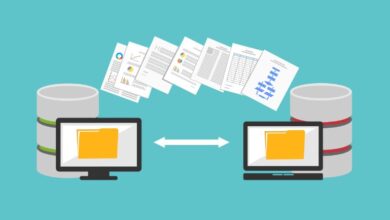
5 Criteria to Consider When Selecting An Automation Testing Tool
Welcome to the thrilling world of software testing, where the importance of automation testing has grown by leaps and bounds! In times when software applications are becoming more complex, ensuring their quality is becoming increasingly challenging. Automation testing has proven to be an effective solution to this challenge, offering faster feedback and more reliable results.
Numerous discussions have taken place regarding the significance of automation testing, the obstacles related to automation testing, and how to initiate it effectively. However, implementing any test automation approach requires selecting the appropriate tool.
Regardless of your strategy, skill level, or budget, using an inadequate or unsuitable test automation tool or framework can result in no outcome at best or inaccurate results that can derail your development pipeline and lead to negative ROI. Given the plethora of options available in the market, choosing the right tool can be daunting.
To simplify the process, we have created a checklist of five essential criteria to consider when selecting an automation testing tool, enabling you to make an informed decision and pick a tool that best fits your needs. So, let’s get started!
Types of Testing Tools
In general, test automation tools can be categorized into three types:
1- Open-Source Tools:
Open-source tools are programs where the source code is publicly available for use and modification, free of charge. Users can pick as-it-is or modify it to suit their specific testing needs. These tools are available for almost any testing phase, from test case management to defect tracking. However, they may have fewer features compared to commercial tools.
Open-source tools are popular among automation testers with a programming background due to their free access and the ability to customize advanced test cases.
2- Commercial Tools:
Commercial tools are software designed for sale or commercial purposes and are typically distributed through subscription plans. Users must purchase a paid license to use the software. Still, these tools often offer premium features and comprehensive customer service to support the entire testing process for companies or enterprises.
They generally have more support and features from vendors than open-source tools.
3- Custom Frameworks:
In some cases, a single open-source or commercial testing tool may not be able to meet the specific requirements of a niche project due to differences in testing processes or environments.
In such situations, teams may need to develop customized software independently. Custom frameworks are much more complex than the other two solutions and require the expertise of technical professionals.
5 Major Criteria For Selecting the Optimal Testing Tool
Although test automation offers numerous advantages, it’s important to note that it may not work equally well for all projects. While some QA teams have reaped the benefits of automation, others could have spent more time, effort, and financial resources in implementing automation tools suitable for their needs.
Therefore, your selection of an automation testing tool should be based on various factors, such as the nature of your projects and your QA team, along with project scope and requirements, instead of solely relying on its reputation. It’s essential to choose the right tool that suits your specific needs rather than the best tool that may not necessarily deliver the desired testing outcome.
This initial process may require significant time and effort, but your team must automate tests efficiently in the long run.
Here’s a checklist of five essential criteria to consider when selecting an automation testing tool:
1. Functionality
One of the most important criteria to consider when selecting an automation testing tool is its functionality. The tool should meet your specific testing needs and requirements.
And before you dive into the plethora of test automation tools and technologies available in the market, it is essential to identify and prioritize your project requirements and the challenges you aim to overcome.
Your list of requirements should address the following questions:
- Type of application: Determine the type of application you wish to test, whether it is a web, mobile, API, or desktop application.
- Platforms to be tested: If it is a desktop application, identify the operating systems you want to test. If it is a mobile application, list the supported mobile operating systems. If it is a web application, specify the supported browsers.
- Programming language: Consider the language used to develop the application, as it can significantly impact the selection of automation tools. You may opt for an automation tool that supports the same programming language as your application, as it will be easier to integrate.
- Cross-browser/cross-device testing: If you are working on a web or mobile application, you may require cross-browser or cross-device testing. Therefore, you need to determine if the automation tool provides this capability.
- Integration with other tools: You may need to integrate the automation tool with other tools, such as a continuous integration tool or a defect tracking tool. Ensure that the automation tool you choose can be easily integrated with these tools.
Moreover, the tool should support different types of testing, including functional, regression testing, performance, and more. The tool should also be able to handle different kinds of test cases, like smoke testing, integration testing, and acceptance testing.
2. Budget Considerations: Evaluating the Financial Feasibility of Test Automation Tools
It’s important to acknowledge that test automation can be a significant investment for many teams. However, when budgeted for effectively, it can yield positive returns on investment for your team and your business over the long term.
When selecting a test automation tool, balancing your needs and budget is crucial. Before making a decision, it is essential to determine the budget allocation for the tool, which may include licensing, operational, maintenance, and support costs. Assess its affordability and any associated costs.
It is also significant to factor in the cost of training existing engineers on the tool’s seamless and full-featured usage. While a highly sophisticated tool may be within budget, if it requires proficiency in a programming language that your team needs to become more familiar with, additional training costs may cause you to exceed your budget.
Comparing the listed rates on a website may provide a partial picture, as each license cost can differ based on various factors such as monthly vs. annual rates, charges per simultaneous user or tests run, and more.
3. Tool’s Compatibility with Your Application’s Operating System, Browser, or Device
This is required due to the rising number of platforms. Application developers must support their applications on all available platforms, which mandates testing the application on each supported platform. Even within a single platform variant, multiple versions must be supported.
The selection of tools depends on the type of application you are using.
- Desktop-Based Applications: For desktop applications, you should specify the number of operating systems on which you want to test the application. For example, if a desktop application claims to be compatible with Linux, it should support various Linux flavors such as RHEL, Ubuntu, and others.
- Browser-Based Applications: You should indicate the number of browsers you want to test for web applications. For example, if you need to run your test cases on Firefox, Chrome, and IE, you may opt for Selenium since it supports all these browsers. However, ensure that the tool you choose supports older and newer versions of your required browsers.
- Mobile-Based Applications: For mobile applications, you should determine the mobile operating systems you need to run your test cases. If your application runs on Android and IOS, your tool should support both. You can also use a separate tool for each mobile OS, such as Robotium for Android, Appium for both IOS and Android, and CodedUI for Windows phone apps.
When setting the objective for an automation tool, it is critical to ensure that it can perform cross-platform testing for all required platforms, allowing for maximum reuse of test scripts.
There are separate open-source tools available to test web-based, mobile-based, and desktop-based applications. However, consider picking a commercial tool like LambdaTest. In that case, you can test all three types of applications (mobile, desktop, and browser-based) using automation tools like Selenium, Playwright, or Appium over more than 3000+ browser and OS combinations.
4. Reporting
When running a script, it will either pass or fail. When it passes, only a little information is required apart from the duration and environment details. But if a test fails, the team must be promptly notified, along with comprehensive reports of the test conditions and environment during the failure.
When evaluating trial versions of automation testing tools, ensuring they provide these features is essential. To achieve this, detailed and meticulous reports of test results are necessary, focusing on capturing the exact steps where failures occur. Screenshots and snapshots of these steps can be beneficial, and the reports should be exportable in various formats for convenience.
While some tools have built-in options for these features, others require customization to generate comprehensive reports. This is another factor to consider when downloading the trial version of a tool.
5. Technical Considerations
Here are a few technical metrics to consider:
- Object Recognition Methods: It is important for an automation test tool to have various methods to select the same object, as some objects may be challenging to recognize. For instance, Selenium offers options to select objects using id, name, class, link test, XPATH, CSS selector, and JavaScript. In case one method fails, there are other options available to choose from.
- Support: It’s crucial to check if the tool has a responsive and dependable support system. If the tool has not posted any new updates, release notes, or documentation lately, it may indicate that it’s no longer being actively developed or that the community is inactive – both of which are negative aspects.
- Handling Recovering Scenarios: When a test case fails, it’s essential to easily manage recovery scenarios to continue the execution of other test cases without interruption. Suppose a tool has effective recovery scenario handling. In that case, it allows for smooth and uninterrupted execution of test cases and easy identification of which test cases have failed and which have passed.
- Record and Playback Support: While not the recommended approach in test automation, this feature would be a valuable addition. Having a tool can simplify the learning process, make it easier to automate simple scenarios, and speed up the creation of intelligent test scenarios.
- Programming and Scripting Language: Consider the programming and scripting languages supported by the automation tool for the application under test (AUT). It is significant to distinguish between programming languages supported by the tool and the scripting languages required for writing test scripts.
The ideal tool should allow Quality Assurance (QA) professionals to write test scripts in their preferred programming languages, eliminating the need to learn a new language and enabling them to quickly create sophisticated and comprehensive tests.
Wrapping It Up!
Selecting the right automation testing tool requires time, effort, and patience to create an evaluation matrix and use it effectively. By leveraging insights and engaging in discussions with relevant stakeholders in your organization, you can find expert advice with relative ease. It’s worth noting that finding the right tool will significantly improve your software testing pipelines, making your life easier in the long run.
However, at times, teams may choose to develop their test automation frameworks due to the unavailability of suitable test automation tools that meet their testing requirements.
Currently, several types of test automation frameworks and tools are available in the market that support automation across a wide range of applications and are constantly being enhanced. Therefore, it is recommended to review the points discussed above and invest time in exploring the available test automation tools before contemplating the creation of a framework from scratch.





